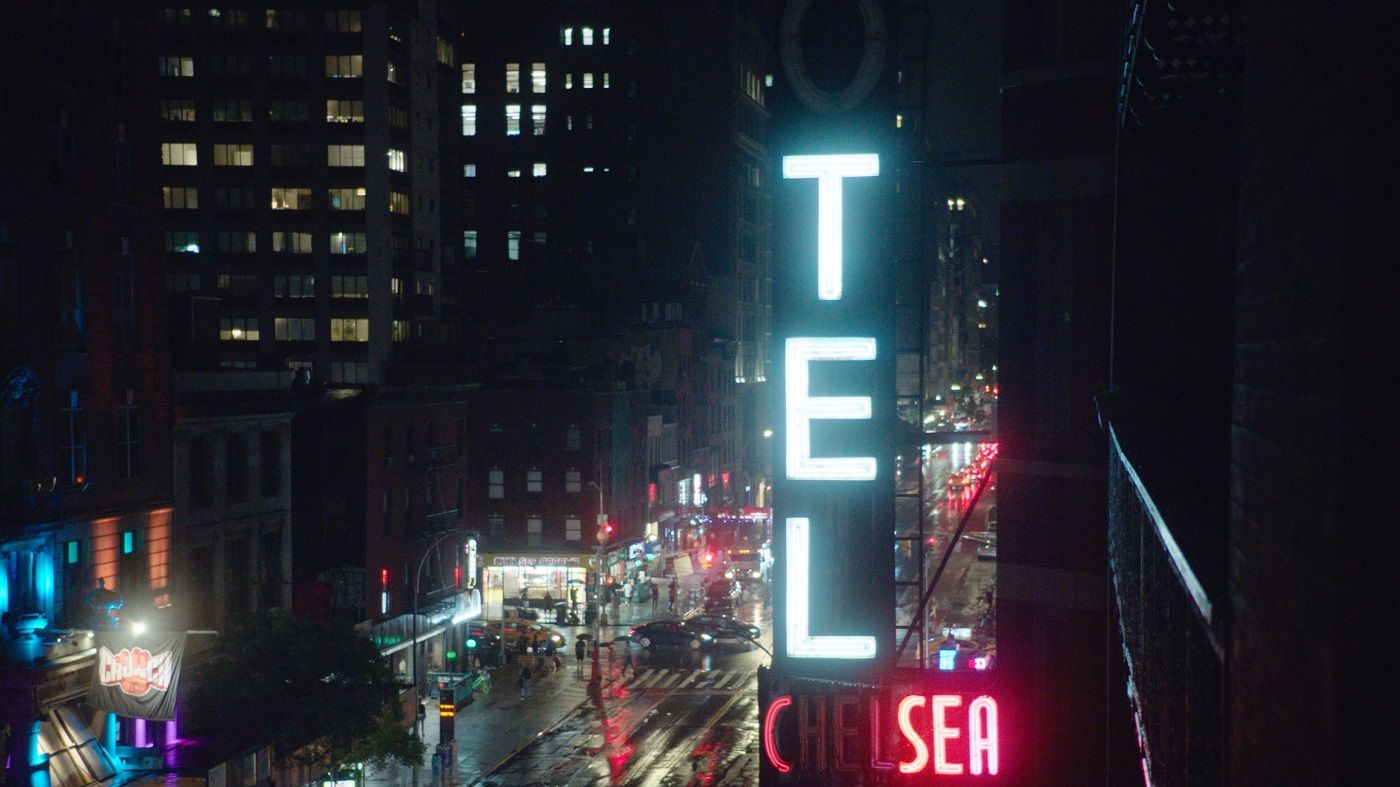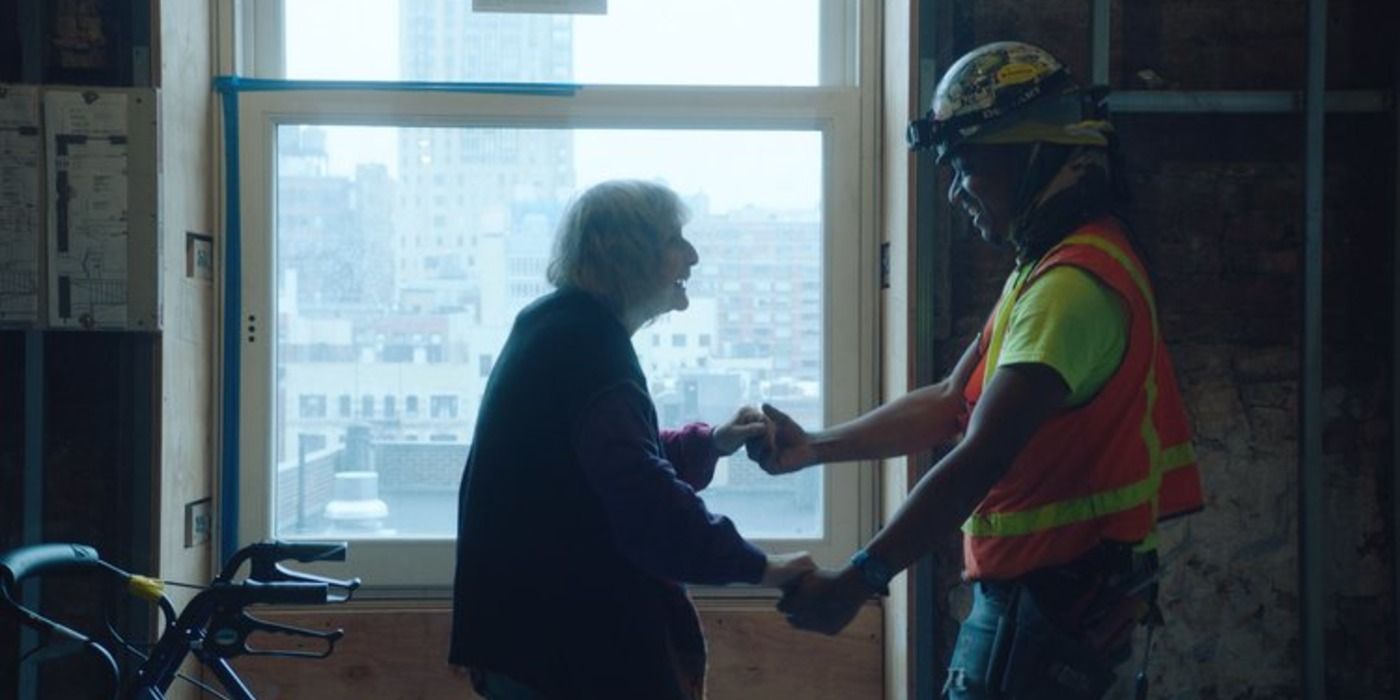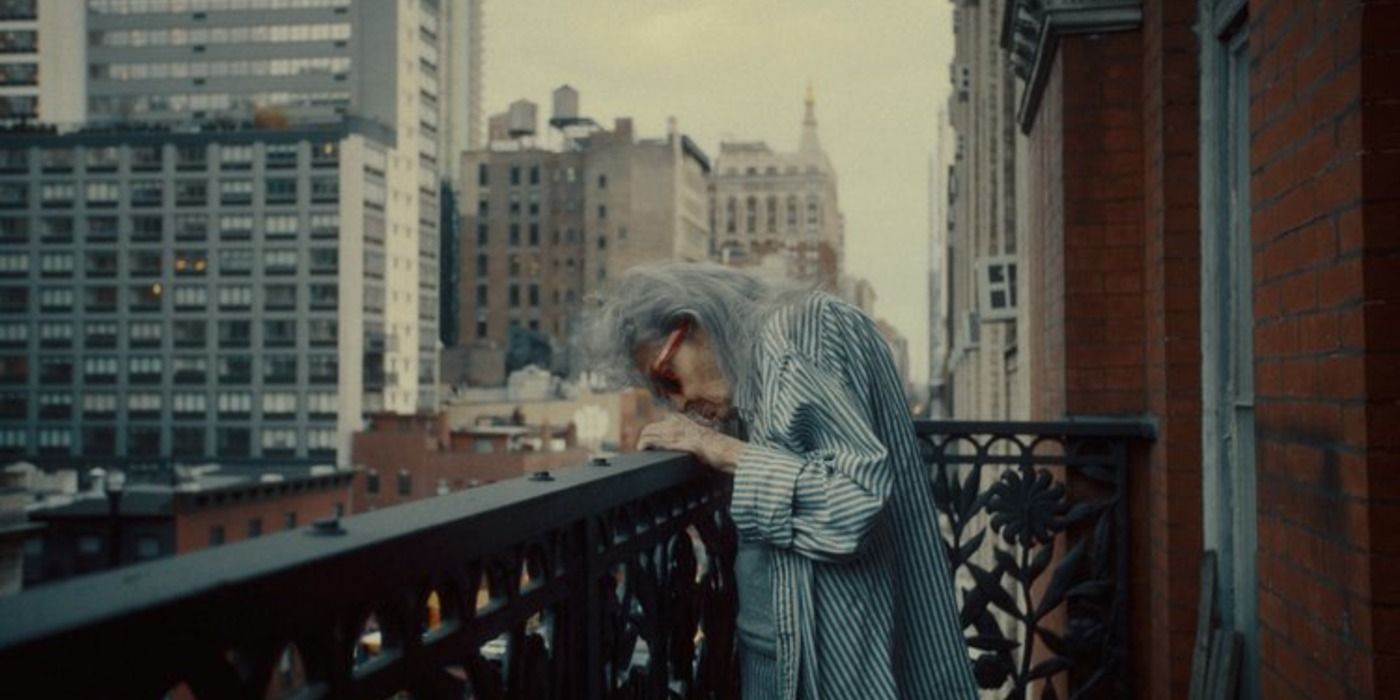The Martin Scorsese-produced documentary Dreaming Walls: Inside the Chelsea Hotel is a film that feels frozen in time. This is a compliment, as it manages to comprehensively capture the history of the iconic Chelsea Hotel in New York in a manner that is quite mesmerizing. It then puts this in a fascinating and poetic conversation with the present. Directed with a delicate hand by Maya Duverdier and Amélie van Elmbt, it flaunts the typical conventions of the form to create something almost magical. Over the course of its fleeting runtime, we learn about how the building was home to writers, musicians, artists, and actors, not through typical talking head interviews, but via projections of scenes that are displayed on the very walls of the building. There is plenty of dialogue, though it is dynamic and interwoven into the texture of the setting. It is like the building itself is full of memories that are just waiting to burst free when you least expect it. You see, even as the building no longer accepts long-term residents, there are many who still live there from before. They are as much a part of the history of the building as the sweeping banisters as they carry their many splendid stories with them.
The film juxtaposes their day-to-day lives against chaotic construction that has now been underway for some time, a source of tension in the building as many tenants have grown tired of the loud sounds echoing through the building. While there are disagreements and occasional squabbles between those living there, the film is most interested in reflecting on the past that almost bleeds into the present. One such moment that is particularly demonstrative of this comes when we are shown archival footage of a woman many decades ago who gracefully dances down the stairs. Then, seemingly at the same staircase all these years later, the scene is recreated with an older woman who was a dancer herself and now instructs a protégé to follow her same steps. It is done in a way that lets the moment linger, leaving us without anyone to explain or narrate what we should be feeling. Instead, it just lets the images speak for themselves, a refreshing demonstration of how documentaries don’t need to hold our hands through its many meanings. It becomes a work of art itself.
This all makes for a documentary that is as informative as any out there while also eschewing the conventions of the form to delve into more emotional depths. Even as someone who loves documentaries and all that they can delve into, they are often solely defined by their subject as opposed to their presentation. They became trapped by the supposed rules and patterns we’ve seen before. There will be an expert or interviewee that talks for a while, then a cut to B-roll, followed by yet another expert, intermixed with yet more B-roll. Maybe there will be an occasional piece of animation for footage that doesn’t exist, and it will all play out in the same safe repetition of pattern. While there has been plenty of valuable, important work done with this means of conversing with the audience, there also is the potential for a different cinematic language. Dreaming Walls: Inside the Chelsea Hotel evokes a language that draws from more observational documentaries before it that it, then infuses with its own manner of speaking. The people and the place become almost intertwined, defining each other in ways that have a collective impact that can’t be shaken. When you listen to the characters reflect on how their lives have gone and why they stay, it draws you in without ever breaking the magic.
It does this by breaking down the artifice between documentarian and subject, turning the camera into more of a quiet observer of the life playing out in this single building. There is never a moment where the camera feels intrusive, it just feels like a floating presence that captures the energy and emotion emerging from every single frame. Be it in a sweet moment where a tenant is dancing with a good-natured construction worker or in a more somber one where terrible loss strikes one subject, there is just so much life that is overflowing from the film. Many documentaries can feel cold, holding their subjects at a distance without ever seeking to know them. Not only does this film throw that out the window, it places us with them and sits with them with patience that becomes quietly profound. You come away having felt like you have learned more about them than even someone you’ve known for all your life.
It is an original work about truly original people, a total exploration of their stories in a way that is like a memoir that refuses to be tied down by any greater fealty to the linear. This may leave you wishing that you could know more about these people, though it is light on its feet and focused on capturing only brief moments in time. That is, after all, what we end up having in life.
It all takes on a dreamlike quality befitting its title, driven less by strict structuralism and more by a sense of feeling that washes over you. In doing so, it is able to more comprehensively capture both the people and the place with a poetry that pays tribute to their shared history. When thinking back on documentaries that will stick with me for how they completely immerse you as the viewer, Dreaming Walls: Inside the Chelsea Hotel will truly be one of the most memorable. It isn’t all suffering and pain as there are sublime moments of triumph, though it is wrapped up in a greater sense of tragedy that is playing out in slow motion.
In one of the film's final conversations, done with the oldest tenant still left, we learn how she was not given anything to leave and thus has stayed as she really has nowhere else to go. It is a stark reminder of the pain that looms over everything, cut with the joy of her looking over a balcony and the documentary providing glimpses back into the past that she would walk through with her camera. While agonizing to see something that is quickly fading, a memory that is now foreclosed to us, her work of photography preserves it. The documentary itself achieves this as well, evolving into an act of preservation in its own right that will forever endure.



